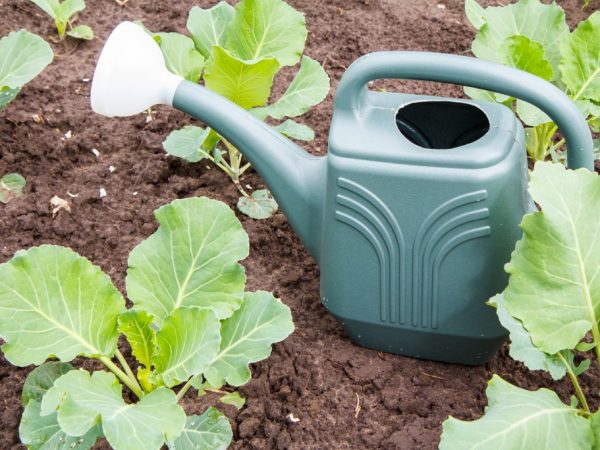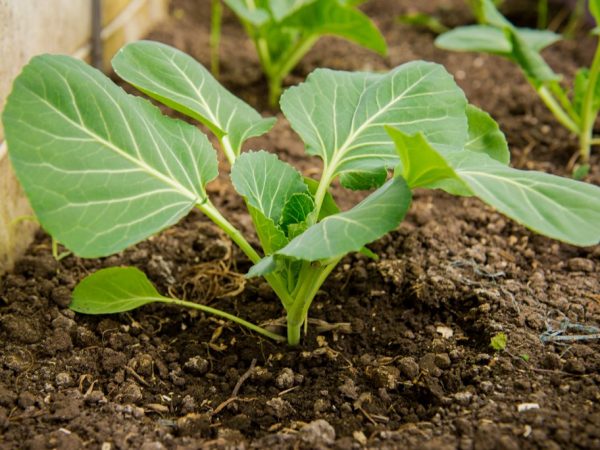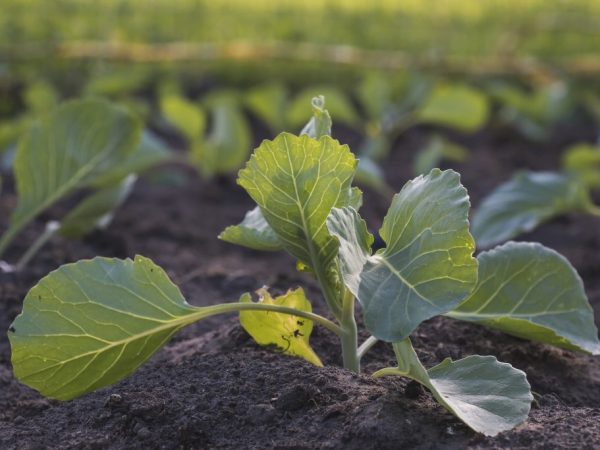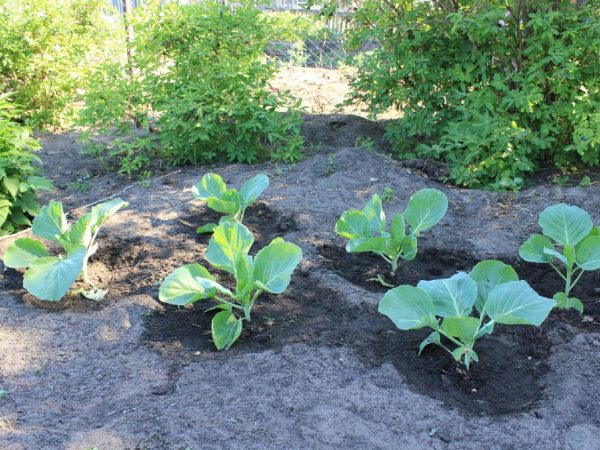Top dressing of cabbage in the garden
The cultivation of any kind of cabbage requires adherence to a certain technology, from the moment of sowing the seeds and ending with harvesting. Fertilizing cabbage allows you to get a good harvest, so it is so important to feed the plantings on time.
- Top dressing in the open field
- Containing nitrogen
- Containing potassium
- Phosphoric
- Organic
- Soil acidity level
- Top dressing of seedlings
- First step
- Second phase
- Stage Three
- Top dressing of early varieties
- 1 meal
- 2 meals
- 3 meals
- Greenhouse food
- Top dressing of late-ripening varieties
- Color
- Beijing
- Broccoli
- Brussels
- White-headed
- Conclusion

Top dressing of cabbage in the garden
Top dressing in the open field
The culture is demanding to care for, especially when it comes to feeding. At the stage of growth and development, seedlings need more mineral nutrition. With intensive growth of a leaf rosette, plants need nitrogen.
Top dressing of cabbage in the open field is a prerequisite for moving sprouts to poorly cultivated and marginal soil.
Containing nitrogen
Cabbage in the open field is fed with several preparations, which include nitrogen.
Nitroammofoska
The white crystalline substance contains more than 30% nitrogen. Top dressing is highly concentrated, therefore, it is necessary to use ammonium nitrate to feed plants without exceeding the permitted rate, otherwise the plants will accumulate a large amount of nitrates that cause poisoning.
Ammonium sulfate
This preparation contains 2 components: nitrogen and sulfur. The nitrogen content in this substance is much less than in ammonium nitrate, therefore, the dose of the drug during plant feeding is increased by 1.5 times the rate of application of ammonium nitrate.
Sulfur, which is part of the top dressing, increases the level of soil acidity.
Urea (urea)
Urea is a highly concentrated substance that contains 45% nitrogen, therefore, when applying, the dose is reduced by 1.5 times the taken dose of ammonium nitrate.
Containing potassium
Potassium provides intensive growth of plant roots and their aerial parts. It is recommended to feed cabbage with this preparation to form a head of cabbage.
Potassium chloride
Potassium chloride is a white crystalline substance that looks like coarse salt crystals. This drug contains 60% potassium. When applied to the soil, it increases the acidity level.
Potassium sulfate
The sulfate contains 50% potassium. The drug is used for the growth and development of chlorophobic plants.
Phosphoric
This vegetable does not particularly need phosphorus fertilizers, but it is not worth excluding them from the general nutrition of plants: feeding with superphosphate ensures the qualitative development of the heads of cabbage and the accumulation of nutrients and nutrients at the end of their ripening period.

Superphosphate saturates plants with nutrients
To fertilize cabbage, ordinary superphosphate is used, containing about 18% phosphorus (double - 45%).
When introducing this substance, the level of soil acidity is taken into account, since phosphorus is poorly absorbed by plants to acidic. Seedlings in such land also grow and develop poorly.
Organic
Organic fertilizers for cabbage are equally important. They provide a full growing season for plants. In addition, such feeding is required for the formation of a hard and juicy head of cabbage.
It is best to feed the cabbage with manure in combination with peat: 6 kg of the mixture is consumed per 1 sq. m beds.
Soil acidity level
The acidity index depends on the composition of the soil:
- for peat, it is 5-5.5 Rn;
- for podzolic - from 6.5 to 7.5 Rn.
You can deacidify the soil with quicklime (fluff) or dolomite flour.
The composition and amount of fertilizers for cabbage depends on the variety planted. Early varieties of cabbage are fed 2-3 times during the entire growing period.
For feeding late cabbage, a mixed nutrition scheme is used: mineral preparations are alternated with organic ones.
Top dressing of seedlings
To get a good harvest of cabbages in the future, the first thing to do is to feed the seedlings.
Plants are fed three times.
First step
The first feeding of cabbage seedlings is carried out at the stage of picking young shoots. For these purposes, the following composition of components is used:
- 25 g of ammonia;
- 40 g phosphorus;
- 10 liters of potash fertilizer.
Dissolve dry ingredients in 10 liters of water.
Second phase

Observe the proportions when preparing the mixture
The second feeding is carried out exactly 2 weeks later. At the initial stage, you need to feed cabbage seedlings with ammonium nitrate. 35 g of the substance are consumed per 10 liters of water.
Stage Three
The last fertilizer for cabbage seedlings is applied when planting in open ground. They consist of the following components:
- nitroammophoska - 35 g;
- force-containing substance - 85 g;
- potassium - 25 g.
The resulting composition is brought to a volume of 10 liters with cold water.
After three times feeding, the plants will get stronger and will be able to successfully develop in new conditions.
Top dressing of early varieties
Given the intensive ripening time of the crop, early varieties need to be fertilized with drugs that stimulate the rapid growth of green mass and root system. In a short period of time, the heads of cabbage gain good weight and absorb nutrients.
1 meal
The first feeding of early varieties of cabbage is done by root method 20 days after planting in the garden. At this stage of development, seedlings are fed with urea and ammonium nitrate. If these fertilizers were applied during the autumn digging of the site, you can feed the cabbage after planting in the ground with a complex composition from the manufacturer. The drug Agricola is in great demand. It is introduced both root and foliar.
2 meals
The next feeding of cabbage in the open field is carried out in two ways: mullein or slurry, previously diluted with water. For 10 liters of water, 0.5 liters of manure is consumed. You can fertilize with the working solution 2 days after it is infused. The interval between the first and subsequent feeding is 2 weeks.
3 meals
For the final feeding of early cabbage, a solution of boric acid is used, which is introduced by the foliar method: 5 g of the substance is diluted with warm boiled water (200 g), then brought to a volume of 10 liters with chilled water.
Boric acid feeding of leaves prevents heads from cracking. If the stalks are deformed, 5 g of molybdenum ammonium is added to the nutrient solution.
Greenhouse food
You can feed the cabbage for the greenhouse according to the above scheme. In addition, one more top dressing is included in the diet of early varieties, which increases the shelf life of cut heads.
Greenhouse plants are fed with ash (400 g) and potassium sulfate (40 g). The resulting mixture is diluted in water (10 L).
The plants are watered with the working solution a few days before cutting the stumps.
Top dressing of late-ripening varieties

Late-ripening varieties are suitable for mineral fertilizers
Nutrition of late-ripening varieties and hybrids is produced in the same way and using the same components as in early-maturing varieties.Additionally, for late varieties of cabbage, fertilizing with mineral fertilizers and mullein is recommended.
The proportion and composition for feeding are the same as for feeding early maturing species. Late cabbage has weak roots; in the process of its nutrition, the dose of potassium and phosphorus is increased.
Irrigation of leaves with ash is an integral part of the care and cultivation of late species. Spraying plants with ash not only nourishes the plants, but also repels insects. Such processing has a bad effect on the appearance of the heads of cabbage and reduces their commercial qualities, so the ash solution can be replaced with a salt solution: 150 g of the substance is dissolved in 10 liters of water. Irrigation of leaves is carried out several times between dressings.
Some gardeners use folk remedies for processing plants. Plants can be fed with nettle, iodine tincture in water.
Color
Like other varieties, this variety is very fond of feeding. Unlike white cabbage, cauliflower responds well to feeding with chicken droppings (1 liter of substance per 20 liters of water). This organic fertilizer can be used instead of mullein and yeast.
Fertilizer should be applied at the rate of 1 liter of nutrient fluid per plant.
Beijing
Peking cabbage is one of the early ripening varieties. Top dressing after planting in open ground is not made.
To grow a good harvest, organic and mineral substances are introduced directly into the soil before the autumn digging: per 1 sq. m mullein (5 kg), double superphosphate (15 g) and potassium sulfate (30 g).
Broccoli
In particular, this culture includes the poor survival rate of seedlings in unprotected soil after transplanting, therefore, the first feeding of cabbage of this variety is carried out a week after planting on the site.
Broccoli seedlings are fed with mullein. The infusion is prepared according to the scheme indicated above.
Such feeding with organic matter after planting in the ground strengthens young plants and stimulates their full growth.
Brussels
During the development of seedlings, this variety of cabbage does not need feeding. To fertilize Brussels sprouts, mineral fertilizers are used on the site, which are applied in spring and summer (in August).
The first food is carried out before planting seedlings: 1 tsp. nitroamofoski for each hole.
The next plant nutrition is carried out at the stage of the formation of the first heads of cabbage. Plants are fertilized with superphosphate, potassium sulfate and nitroammophos - 25 g of each substance. The dry mixture is diluted in a bucket of water. 1.5 liters of liquid fertilizing are poured under each seedling.
White-headed
White cabbage should be fed repeatedly:
- There are 2 options for fertilizers for white cabbage. They are brought in 2 weeks after planting seedlings in the garden. Young plantings are fertilized with mullein (0.5 liters of substance per 10 liters of water). Also, seedlings of this culture are fed with urea (30 g of substance per 10 l of water).
- The second feeding of white cabbage is carried out 2 weeks after the first. The plants are fertilized with urea or dissolved mullein.
- After another 2-3 weeks, planting is fed with rotted manure (500 g), liquid mullein (0.5 l) and superphosphate (30 g). The resulting mixture is dissolved in 10 L of water. A liter of top dressing is spent on one copy. Such feeding is required for the formation of heads of cabbage in plants.
- You should feed the cabbage for keeping quality several weeks before cutting off the heads. Plants are irrigated with 200 g of ash solution per 10 liters of water.
Conclusion
You can feed cabbage in the open field with various preparations. Each variety and type has its own nutritional scheme. But besides proper nutrition, this garden culture requires proper planting and proper care.


